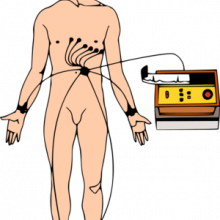This week, how analysing tweets can gauge the mood of people around the world, a new way to predict someone's risk of a heart attack, the new field of 'designer plastics' and how Mercury is providing a window into our early Solar system. Plus, the launch of a Chinese Space Station, using glowing bacteria to encode secret messages and the results of this year's Ig Nobel awards including dizzy discus throwers, beetles mating with beer bottles and a drastic way to stop illegal parking...
In this episode

04:49 - Designer plastics
Designer plastics
Plastics are used all over the modern world from toothbrushes to fighter jets, because they have a very wide range of physical properties. This is partly because there are lots of different plastics with different chemistries, but two plastics with the same chemistry but different structures can have very different properties. Plastics are polymers, they are made up of repeating chains, petrol, wax and polythene are all just different lengths of the same type of hydrocarbon chain. Plus the chains don't have to be straight, they can be branched, and the branches can be of different lengths, all of which affect the strength stiffness and other properties of the plastic.
This is a huge advantage, but it is also a problem, as normally plastics for a particular application are produced essentially by trial and error, testing lots of different conditions, amounts of catalyst etc, until they produce the right properties. This is particularly a problem if we are to replace conventional plastics with biodegradable or plant derived plastics.
Daniel Read and colleagues from Leeds and Durham universities may have made this process much more predictable. They have developed computer model which will take the conditions of a polythene reaction chamber and predict the degree of branching, and the structure of that branching.
They then feed this data into a second computer model which predicts the physical properties, from the molecular structure by predicting the amount the molecules can wriggle past each other, in the middle of the chains, and how easily the ends of the chains can move, and they have now got it to work very well for polythene.
This means that they could already predict the conditions you need to produce a polythene with particular properties, and potentially what happens if you blend different polythenes as you recycle them, and by changing a few numbers in their simulation they could adapt it for new systems like bio-polymers making their development much faster and more efficient.

08:23 - Moods worldwide revealed by Twitter
Moods worldwide revealed by Twitter
An analysis of over half a billion "tweets" worldwide has confirmed that,  regardless of country or culture, we're all in a better mood in the morning!
regardless of country or culture, we're all in a better mood in the morning!
Researchers Scott Gelder and Michael Macy fed into a language-analysing computer programme the messages posted on the Twitter microblogging site by 2.4 million people from 84 different countries over a two year period.
Based on the words used, the "tweets" were divided up into those conveying either a positive or negative vibe, known as affect. Plotting the frequency of these good or bad vibrations against time of day, and then comparing the results geographically, the Cornell-based duo were able to create a two-year profile of how the daily moods of different cultures varied with time.
In general, the results reveal, we're all much happier early on in the day, with a significantly higher rate of positive tweets posted first thing. There's also a late flurry of positive sentiment just before bed. Predictably, weekends also tend to be associated with more a positive affect, although the peaks at weekends tend to occur later in the day, consistent with people having a lie-in. (Clearly the majority of weekend tweeters don't have young children). Interestingly, negative affect, which is lowest in the morning and grows across the day, is not linked to positive affect - the two sentiments are not at opposite ends of a single dimension but instead move consistently in parallel.
The longitudinal nature of the study also means that its perfect for studying another well-known mood-related problem: the "winter blues". By marrying up the trends in the data with the relative day lengths Gelder and Macy were able to test the theory that seasonal affective changes are not directly linked to the absolute length of a day per-se, but instead to the relative change in day-length and the timing of the onset of dawn, which is important for setting the body's internal clock. Absolute day-length, they found, makes little difference to mood, but shortening days are associated with people posting fewer positive comments while lengthening days produce more positively-loaded expressions.
Published in the journal Science this week, the sheer scale of this enterprise, and its cross-cultural and multi-demographic nature, overcomes many of the hurdles previously encountered by researchers trying to study how the moods of individuals varies across a day. So now you know when not to ring someone up with bad news...

15:37 - Getting to the heart of coronary risk prediction
Getting to the heart of coronary risk prediction
An analysis of electrical heart tracings from thousands of patients has  revealed a new way to spot those at risk of repeat heart attacks.
revealed a new way to spot those at risk of repeat heart attacks.
University of Michigan scientist Zeeshan Syed and his colleagues, writing in Science Translational Medicine, used a computer to marry up clinical outcomes with the features present in long-term electrocardiogram (ECG) recordings of over 4500 people who had undergone a recent heart attack.
They were able to define three characteristic "biomarkers" that could be used to predict an individual patient's risk of further heart problems. These they have called Morphological variability (MV), which looks at how the shape of the ECG tracing changes over time, the Symbolic Mismatch (SM), which compares an individual patient's ECG trace with those of other patients with a similar clinical history, and the Heart Rate Motif (HRM), which looks at how often "risky" patterns of heart rate activity crop up in an individual's recordings.
Incorporating these assessments into the existing protocols used to calculate a patient's risk could, they say, enable doctors to better identify those patients most in need of close monitoring or more intensive drug therapies; on the flip side, it could also potentially spare patients who are actually at a lower risk than first thought from having more rigorous interventions that they don't require. Moreover, as the scientists point out in their paper, "these biomarkers can be extracted from data that are already routinely captured from patients with acute coronary syndrome and will allow for more accurate risk stratification and potentially better patient treatment."

19:16 - Space Stations, The Dead Sea Scrolls and Glowing Bacteria...
Space Stations, The Dead Sea Scrolls and Glowing Bacteria...
Anu Ohja, National Space Centre; Geza Vermes, University of Oxford; Rich Masel, Dioxide Materials; Michel Lucas, Harvard School of Public Health; David Walts, Tufts University;
Chinese Satellite Launched
Meera - China has launched its first space station, set to orbit 220 miles above the Earth.
The unmanned Tiangong 1 space laboratory, meaning 'Heavenly Place' was launched from the Gobi Desert on the 29th September carried up by the rocket, Long March and will remain in orbit for 2 years...
Anu Ohja from the National space Centre in Leicester, on the aims of the mission...
Anu - In a couple of month's time in November, there'll be the mission called Shenzhou VII, practicing rendezvousing and then docking with Tiangong-1. Now that's going to be unmanned and the plan is for that to stay up there for 12 days. What will then follow over the next year are two more missions. One of which will be manned, but the current plan is to have Tiangong-1 altogether in orbit for about two years with Tiangong-2 following as a successor in 2014.
---
Dead Sea Scrolls Online
Meera - High Resolution images of the Dead Sea Scrolls are now available online.
Five major scrolls from these ancient manuscripts, originally written on parchment and papyrus, have now been digitised by Google in collaboration with the Israel Museum, enabling billions of people to access these biblical texts in their original form, as Geza Vermes, Emeritus Professor of Jewish Studies at the University of Oxford explains...
Geza - One of the most important contributions here is, that people can see the actual scrolls as they are, the colour of the leather, shape, darkness, and spots of ink on the manuscript so that they can actually come as close to the documents as those who can hold them in their hands.
---
Converting CO2 emissions into fuel
Meera - Carbon Dioxide emissions could soon be converted back into fuel, reducing levels of the greenhouse gas released into our atmosphere.
Using a process dubbed artificial photosynthesis, Rich Masel and colleagues at the company Dioxide Materials, have used solar energy to convert carbon dioxide into carbon monoxide and water, which in turn combines with hydrogen to produce synthetic gas now used by many oil companies to produce fuel...
Rich - This is a viable route in the long term to make the fuel for your car, or your truck or your airplane that doesn't compete with the food supply, and it's completely renewable and recyclable. So it changes CO2 from something we dump or have to bury into something that we recycle and reuse, and it's a renewable resource.
---
Hidden Messages with a Bacterial Glow
Meera - Glowing bacteria could soon be used to encode secret messages.
 Working with E. coli and fluorescent proteins, David Waltz from Tufts University used combinations of bacteria to encode messages onto sheets of paper made of nitrocellulose. Potential uses for the process are product authentication, prevention of counterfeiting and even biological bar coding, with people wanting to decide for the message, needing to know the right nutrient and light needed to read the bacterial glow.
Working with E. coli and fluorescent proteins, David Waltz from Tufts University used combinations of bacteria to encode messages onto sheets of paper made of nitrocellulose. Potential uses for the process are product authentication, prevention of counterfeiting and even biological bar coding, with people wanting to decide for the message, needing to know the right nutrient and light needed to read the bacterial glow.
David - It's a combination of two colours, corresponds to either a letter, a number or a symbol, and we array those in a particular order and bacteria do not glow unless they're exposed to a particular nutrient. And so, when those bacteria grow in the proper medium, they develop the colours that they're designed to present and the message, kind of like invisible ink then appears magically.
---
The Ig Nobel Awards
And finally, the 21st annual
Ig Nobel awardstook place at Harvard University this week honouring scientists for research that makes people laugh and then makes them think.
This year's prizes honoured work on why discus throwers get dizzy when hammer throwers don't, the use of wasabi to wake people up in an emergency, as well as our decision-making ability when needing to urinate.
Marc Abrahams is in charge of the ceremony...
Mark - The point of them in a way is just to show people things that are so unexpected and entrancing. They are going to make you want to know more. Among the winners were the Mayor of Vilnius, Lithuania who won the Peace Prize for demonstrating a new way to discourage people from parking their cars in bicycle lanes. He runs over their cars with an armoured tank.
The prizes themselves are presented by real Nobel Prize winners and continue to grow in popularity each year.
Related Content
- Previous Do pregnant women breathe more?
- Next Would a Siphon Work in Space?










Comments
Add a comment